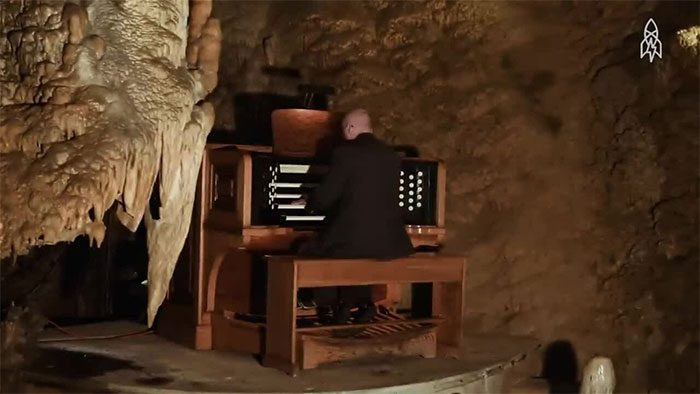The Great Stalacpipe Organ is created from stalactites within the Luray Caverns, producing a sound that is truly unique in the world.
The world’s largest musical instrument, the Great Stalacpipe Organ. (Video: Great Big Story).
The Luray Caverns were discovered by tinsmith Andrew Campbell and his nephew on August 13, 1878. This is the largest cave system in the Eastern United States, featuring countless stalactites and stalagmites.
The formation of the cave system began hundreds of millions of years ago, when this area was part of an ancient seabed. Over time, sediments were compressed, forming a type of limestone known as dolomite. When two continents collided 300 to 500 million years ago, they gave rise to the Appalachian Mountains, pushing the rock upwards into what is now called Cavern Hill. The caves formed when acidic water seeped through cracks in the rock, leading to the development of stalactites and stalagmites from calcium carbonate deposited by dripping water.
Shortly after the caves were discovered, attention began to focus on their unique acoustic properties, and even concerts were held there, according to a book from 1880. The author noted that when the stalactites were gently tapped by a guide’s finger, they produced sweet, enchanting sounds.
In 1954, mathematician and electrical engineer Leland Sprinkle visited the Luray Caverns with his son. During the visit, the tour guide demonstrated that stalactites of different sizes produced different sounds.

The Great Stalacpipe Organ produces remarkably unique sounds.
Sprinkle decided to create the world’s largest instrument, the Great Stalacpipe Organ. He spent three years scraping the stalactites to produce precise musical notes, with two of the 37 stalactites remaining intact due to their already ideal sound. He then devised a system so that when organ keys were pressed, an electrical signal would trigger a device that struck the corresponding stalactite.
The results were astounding and varied, depending on the listener’s position within the cave. “The sound in the cave is not uniform. In some places, the sound does not echo much, while in others, it resonates more. The more porous or rough the cave walls are, the less the sound will echo,” explained acoustician David Lubman.
The massive instrument covers an area of approximately 14,100 square meters and is not easy to play, as the time from when an artist presses a key until the note is heard can take nearly a second. Additionally, the stalactites are scattered throughout the cave, so the time it takes for the sound to reach the musician’s ears varies. To make it more convenient, the instrument is now automated for visitors.
- AI recreates a stunning performance by a Qing dynasty magician: Even David Copperfield would be impressed!
- The mystery of the Tunguska explosion may have been solved, the cause actually being a wandering meteor phenomenon
- Why are graves often shaped like triangles? Read on to discover how smart the ancients were!





















































